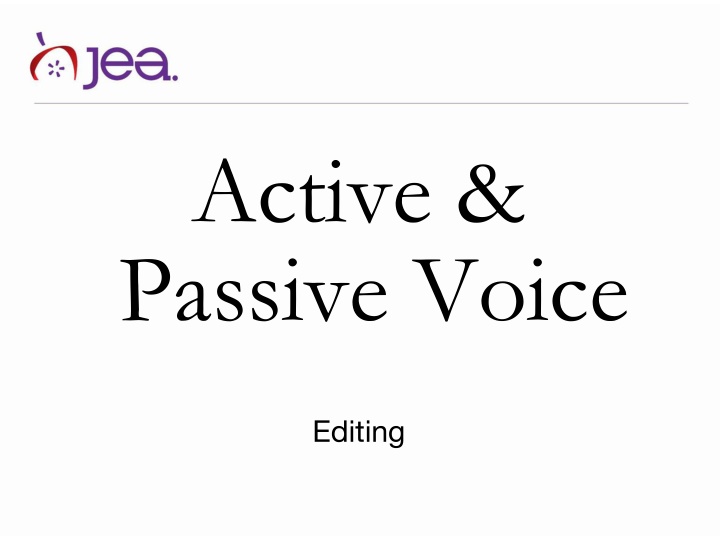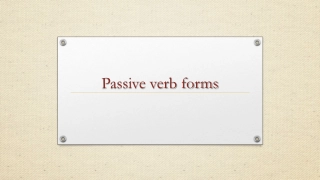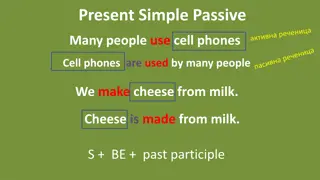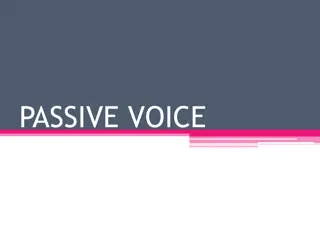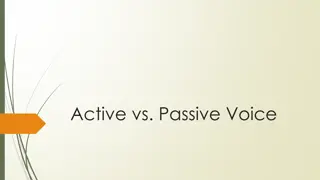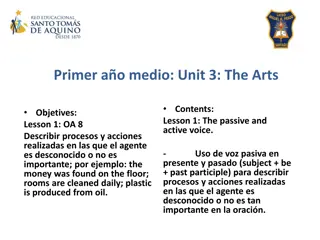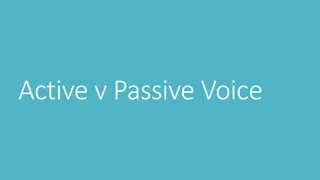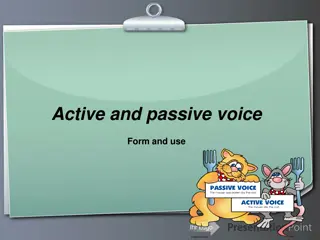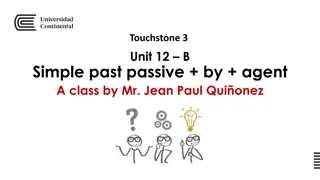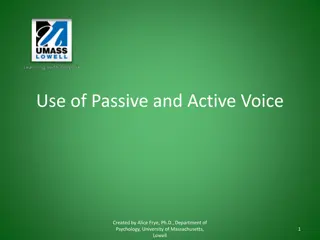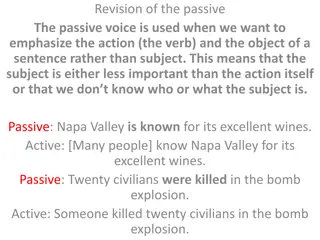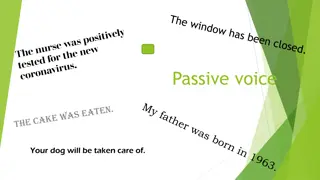Active and Passive Voice
Active and passive voice are two ways action verbs can be used in writing. Active voice emphasizes the subject performing the action, while passive voice focuses on the subject receiving the action. Learn how to distinguish and use these voices effectively to enhance your writing.
Download Presentation

Please find below an Image/Link to download the presentation.
The content on the website is provided AS IS for your information and personal use only. It may not be sold, licensed, or shared on other websites without obtaining consent from the author.If you encounter any issues during the download, it is possible that the publisher has removed the file from their server.
You are allowed to download the files provided on this website for personal or commercial use, subject to the condition that they are used lawfully. All files are the property of their respective owners.
The content on the website is provided AS IS for your information and personal use only. It may not be sold, licensed, or shared on other websites without obtaining consent from the author.
E N D
Presentation Transcript
Active & Passive Voice Editing
Action verbs can be used two ways. ACTIVE voice or PASSIVE voice
Active voice A sentence has a verb in the active voice when the subject performs the action. The catcher caught the ball.
Passive voice A sentence has a verb in the passive voice when the action is performed on the subject. The ball was caught by the catcher.
Passive voice The passive voice is formed by using the past participle of the verb with a form of the helping verb be. The ball is caught by the catcher. The ball was caught by the catcher. The ball will be caught by the catcher.
Passive voice In passive voice, the subject receives the action expressed in the verb. The subject is acted upon. The agent performing the action may appear in a by the phrase, or the agent may be omitted.
Passive voice Red = action Green = subject The boy was bitten by the dog. The movie will be directed by Joss Whedon.
How to change passive to active Red = action Green = subject The boy was bitten by the dog. (Ask yourself, who is doing what?) The dog bit the boy.
How to change passive to active Red = action Green = subject The movie will be directed by Joss Whedon. Joss Whedon will direct the movie.
So which do I use? Active voice is more interesting, more direct and makes for livelier writing.
Reasons to use active voice Active voice is shorter and more direct. Active: The waiter dropped the tray of food. Passive: The tray of food was dropped by the waiter.
Reasons to use active voice Active voice is less awkward and clearly states the relationship between subject and action. Passive: Your request for funding has been denied by the review committee. Active: The review committee denied your request for funding.
Reasons to use active voice Passive: Your bicycle has been damaged. (by whom?) Active: Jonathan damaged your bicycle.
Reasons to use active voice Active voice propels the reader forward through your writing. Passive: The brakes were slammed on by her as the car sped downhill. Active: She slammed on the brakes as the car sped downhill.
Reasons to use active voice Passive: The entrance exam was failed by over one-third of the applicants to the school. Active: Over one-third of the applicants to the school failed the exam.
